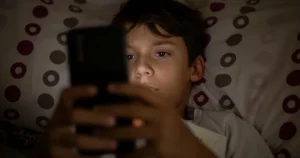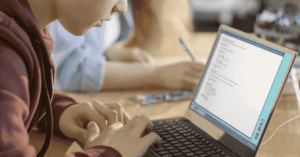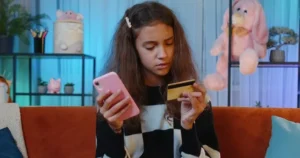Following the popularity of the Netflix series, Adolescence, many have called it essential viewing for parents. With the announcement that the series will be available for screening in secondary classrooms, experts question whether that’s the right move.
Explore what our expert panel have to say about the issue below.
What are the potential issues with showing Adolescence in schools?
It’s important to recognise that the classroom isn’t the ideal place for such heavy, dramatised content. Additionally, using Adolescence in a classroom setting raises several other issues:
Teacher readiness
Most teachers aren’t trained to lead discussions about such heavy topics. Expecting them to handle these issues without proper training can leave both teachers and students unprepared for the deep conversations needed.
Better use of class time
Instead of spending hours watching a drama in class, use that time to build critical thinking skills. For example, students can work on projects like creating their idea of a positive influencer or discussing what healthy social interactions should look like online.
Content appropriateness
Most teachers aren’t trained to lead discussions about such heavy topics. Expecting them to handle these issues without proper training can leave both teachers and students unprepared for the deep conversations needed.
Negative school portrayals
The show contains heavy themes that are not suitable for all students. It’s important to recognise that not every young person is ready to handle discussions about violent or negative behaviors, which might be too overwhelming without proper support.
What concerns do you have about showing the series to children?
In the last few weeks, a human algorithm of panic, fear and worry has struck the hearts of parents, teachers and campaigners who are anti-smartphone or -technology for children. Moreover, and more concerning, is the call to show this to young people in schools.
The reason this is concerning is manyfold. Here are some of these reasons:
Adolescence is a drama
The TV show is exactly that: a made-up event to create something people want to watch and to capture your attention (so you watch to the end). It’s the same way big tech is said to capture your attention online!
Lack of research
The show is not backed up by research, nor have any major researchers in the area stepped up or stated they were consulted. The screenwriter has also not stated they used one or more sources to help them create the storyline to be factual.
Additionally:
- The show portrays what is called an ‘outlier’ in research, meaning it is a very rare occurrence and not the ‘norm’;
- Adolescence does not portray both sides of the story ‘evenly’ (that said, I hear there is a part 2 coming);
- Research does not support showing children TV shows to get them to ‘change their behaviour’ or ‘teach them a lesson’.
The incel issue is not addressed appropriately
This issue of ‘incel’ (involuntary celibacy) is one that is often attributed to adults not 13-year-old boys, who by default are mostly (according to research) not engaging in sexual activity. Therefore, they’re ‘celibate’ because of their age. This is not the same as the theory around adults who are incels. Please see the work of William Costello for a great breakdown of this issue on the podcast Triggernometry.
Shaming children, and boys in particular
The show is highly shaming towards children, especially boys. It does not explore Katie’s or Jamie’s story in depth, other than to show Jamie as being a ‘toxic’ male with issues around masculinity. Again, he is 13, not an adult, so it would be likely he is still growing up and learning what being a male is. Moreover, sexuality and development are still in the process of becoming; the phase of adolescence continues into one’s mid-twenties.
For a great insight into shame and how this was played out in the TV show see this article.
Potentially traumatising
Mostly, given my specialism, this show could potentially traumatise or retraumatise children (via cybertrauma®). Adolescence has an age rating of 15, and there would need to be an ethical conversation taking place (at the DfE) about consent to show children material that is deemed age gated.
There are also ethical considerations for those with a history of police entering their homes, police arrests, knife crime conversations, social care, learning difficulties, neurodivergent needs and more (too many to discuss here).
Misunderstanding the use of emojis
The show ‘hints’ at (but does not explore fully) the online world and emojis being the language of young teens, which is not backed up by research. Clients in my practice say these emojis are not used (by this age group). Some have said that adults are not “getting” them “thinking we are talking like that!”
This age group also tells me that if they were using those emojis, the fact we adults are talking about it means they wouldn’t be doing it now. They would find alternative ways to communicate.
This is why we cannot take all of those emoji handouts to be the way in which children are talking to each other. I often see younger children copying teens’ language without knowing what, why or how this language is used (some are still saying ‘bruh’ or ‘fam’, for example).
How can parents promote positive relationships?
Relationships in the home have the first and most profound impact on children, starting in pregnancy. While we understand the desire to screen Adolescence in schools, it is vital that this goes hand in hand with staff who have received training in trauma-informed practice, relationships education and domestic abuse, and that they can support the emotional safety of students and staff involved.
We mustn’t rely on education in school, or the role of Netflix dramas, to educate our children on how they should behave. Instead, we should look at the relationships within our homes and what we are modelling for our children. This begins with asking our children and teenagers what they need from us and being prepared to hear the answer. It may also mean seeking vital help and support if we are struggling with domestic abuse within the home.









